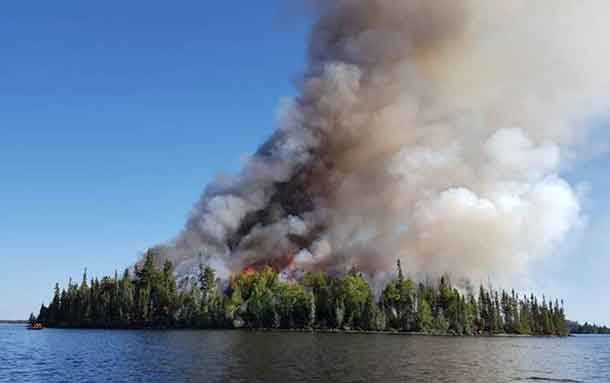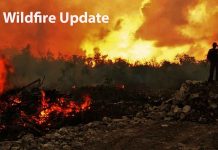MONTREAL – Forest fires and wildland fires are common in summer in the temperate boreal forest, rarer at high altitudes, and unheard of in an ice age at high altitudes – until now. Evidence of wildfires dating back 20,000 years was recently discovered in the Massif du Queyras, in the heart of the French Alps, 2,240 metres above sea level. The news comes in a joint Canada-France study published in New Phytologist and co-authored by Olivier Blarquez, a geography professor at Université de Montréal, and Christopher Carcaillet, a professor at the École Pratique des Hautes Études, in Paris, and at the Laboratoire d’écologie des hydrosystèmes naturels et anthropisés (CNRS/Université Lyon 1/ENTPE).
“This discovery is not trivial,” said Blarquez. “It echoes the recent wildfires in the Arctic tundra, where [the presence of] trees have become increasingly common. The situation has drawn the attention of the scientific community because of its significant impact on the [Earth’s] carbon cycle. Changes in high mountain forest cover due to global warming, and especially the abandonment of agricultural land, risk exacerbating the spread of wildfires in the coming years.”
In their study, Blarquez and Carcaillet reconstruct wildland fire frequency and forest composition over the past 20,000 years, including the Last Glacial Maximum, when ice sheets were at their greatest extension. The researchers’ findings suggest there was a tree glacial refugium during this period, when wildfires were able to break out. The authors also consider the complex long-term interactions between fires, vegetation and climate.
“Wildfires spread when fuel is available and the climate is dry,” said Carcaillet, who is also co-director of the Laboratoire international associé franco-canadien MONTABOR.
“It is therefore counterintuitive to imagine wildland fires in periglacial, subpolar or mountain areas. And yet [the discovery of] high mountain lacustrine sediments revealed just that. Wildfires were indeed rare, but the presence of wood charcoal confirmed that they did occur, even during glacial and postglacial periods.”
High mountain wildfires: Swiss stone pines, larches among the causes
Wildfires occurred in the Massif du Queyras, situated between France and Italy, because the trees survived the ice age. Evidence of their existence has been found in macro-remains such as leaves and seeds. However, a second area located further north, in the Massif de la Vanoise (Auvergne-Rhône-Alpes) where sediment accumulated during the Last Glacial Maximum, shows no trace of vegetation. No evidence of wildfires was found in this area, because without vegetation to burn, fire couldn’t spread.
In the Queyras, Swiss stone pines and larches formed an isolated tree glacial refugium, “like an island in the middle of an ocean of ice,” according to the study. Protected during the Last Glacial Maximum, these trees could be the genetic ancestors of the Swiss stone pines and larches that still grow in the valleys of the Western Alps. As the dominant forest cover changed, fires began to happen. In the early Holocene Epoch (about 10,700 years ago), the climate became warmer and more humid; the Swiss stone pine, dominant in areas with low fire frequencies during the ice age (when the climate was cold and dry), was replaced by the larch, which coincided with increased fire frequencies.
“This study demonstrates that a periglacial climate does not preclude wildfires,” said Carcaillet. “Trees – in this case, Swiss stone pines – are necessary for fires to burn in high mountains. The climate affects the frequency of fires, and in return, fires affect tree diversity.”






